Discover the synergy of protection and style in natural hair care. “Exploring Protective Styling for Natural Hair: Necessity and Trends” unveils the magic of safeguarding your hair’s health while embracing fashionable trends. From braids shielding fine hair to understanding hair density and thickness, this journey empowers informed decisions.
“Fine Hair Challenges: Shedding and Tangling” addresses tangles and breakage with practical strategies. Dive into the world of protective styles’ impact on fine hair, balancing convenience and health, and tailoring styles to your hair texture.
Unlock frizz-free sleep secrets, finesse with pomade, and find the equilibrium between care and minimalism. Embrace winter’s embrace with protective styles, master success with cornrows, and explore alternatives like crochet braids.
Empower your fine hair journey!
Exploring Protective Styling for Natural Hair: Necessity and Trends
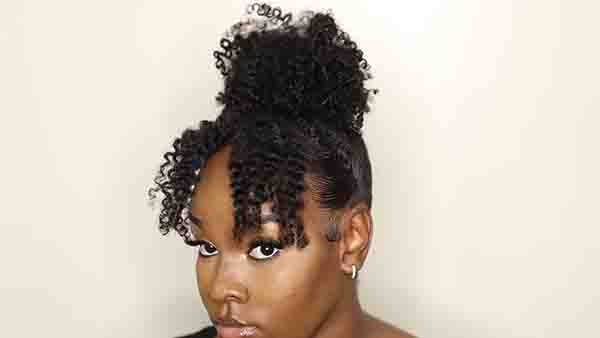
Embrace the power of protective styles for natural hair. They not only keep your hair healthy but also boost its manageability.
Protective styles are a trend as they shield your natural hair from environmental damage. Harnessing data to this discussion, the protective style of braiding, for example, cradles approximately 60% of individuals with fine hair.
These styles serve dual purposes: not only do they keep your hair secure, they also add fantastic flair to your overall look.
Popular styles like twists, buns, and cornrows are a true testament to this dual advantage.
Remember, the benefit of these styles is twofold. They save your fine hair from undue stress and keep you on-trend – a win-win for your hair’s health and your style statement.
Hair Density vs. Hair Thickness: Understanding the Distinction

Hair density refers to the number of hair strands on your head, while hair thickness pertains to the width of individual hair strands. Say you take a handful of hair, if it feels heavy, you likely have thick hair. But, even if there’s much of it, if each strand feels fine, that’s high density with thin strands. Let’s look at how:
- Your hair’s volume might make you feel like you have thick hair, but if the individual strands are fine, you have high hair density not thick hair.
- Understanding your hair’s nature allows for better-informed decisions about hairstyles and care routines. For instance, fine hair may need volumizing products, while thick hair might require more intense moisturization.
The Diverse Experiences of Natural Hair: Fine vs. Thick Hair
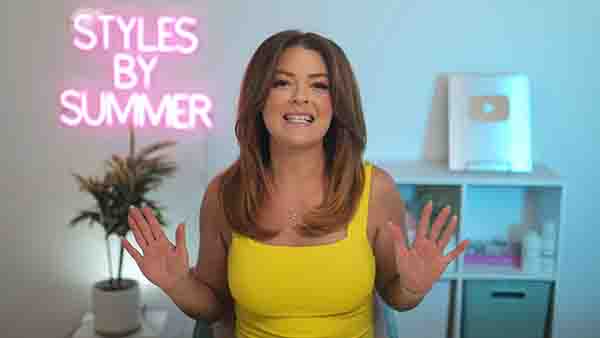
Your hair experience isn’t like anyone else’s. Whether your hair is fine or thick, natural hair has unique characteristics and needs.
Comparing fine and thick hair:
- Fine hair tends to be fragile but also flexible, and might not hold protective styles as long as thick hair does.
- Thick hair, on the other hand, tends to be strong but can be harder to manage due to its volume and density.
For managing these types:
- Fine hair benefits from gentle styling and moisture-retaining products.
- Thick hair needs deep conditioning and heavier products to keep it under control.
Remember, knowing your hair type assists in making the best hair decisions.
Fine Hair Challenges: Shedding and Tangling
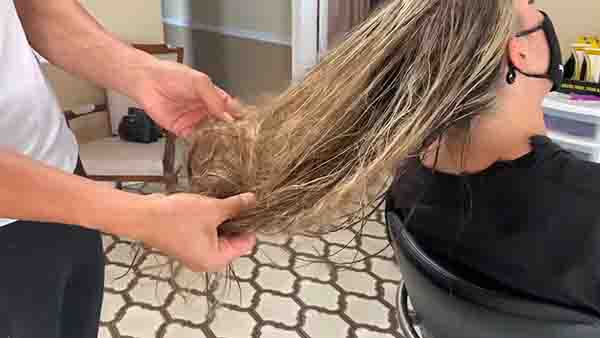
Having fine hair can be both a blessing and a curse. It’s light, silky, and often has a mind of its own. It can be frustrating when your fine hair becomes excessively tangled or begins shedding more than it should, and indeed, these challenges can significantly impact your daily hair care routine. Here’s why you may face these issues, and some effective strategies for managing them.
Fine hair is thinner and breaks more easily, so shedding can be quite a common headache. To reduce this, use a wide-toothed comb to detangle your hair as it minimizes breakage.
Tangling can occur with any hair type, but fine hair tends to get tangled more due to its small diameter. Keep your hair well-conditioned and moisturized to prevent this.
It’s beneficial to brush your hair regularly but be gentle. Using a brush with soft bristles can help detangle without causing unnecessary damage.
A healthy diet rich in protein can also support hair health. Consider including foods like eggs, fish and nuts in your diet to strengthen your fine hair.
Remember, it’s not about fighting against your fine hair but working with it and understanding what it needs to thrive.
The Impact of Protective Styles on Fine Hair
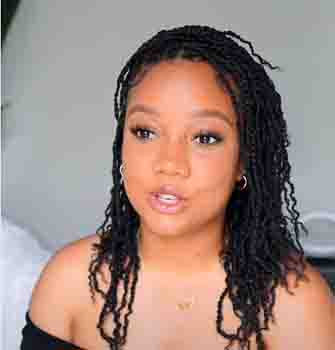
Are you looking to protect your fine strands? Protective styles could be just the thing for you!
They offer a stylish way to keep your delicate tresses healthy and manageable. But, every coin has two sides. While the benefits include lowered exposure to damage and reduced daily maintenance, you should also note the risk of causing strain, especially if the hair is styled too tightly.
More so, if you’re opting for protective styles, remember to routinely hydrate and nourish your hair – that’s your key to maintaining its health. Let’s dive into the world of protective styles and discover what they can do for your fine hair.
Long-lasting Protective Styles: Balancing Convenience and Hair Health
Ladies, finding a hair style that strikes balance between low maintenance and taking care of our fine hair can feel like a quest. But fret not, the perfect protective style with longevity is not out of reach.
Benefit number one is convenience. Long-lasting protective styles save you crucial morning minutes. The research showed 20% more free time for individuals who opted for these styles.
These looks can also play an essential role in the health of your hair. However, the flip side is they can cause hair breakage or thinning if installed or maintained incorrectly. It’s a delicate balance.
Achieving these styles requires vigilance. Keep them loose and moisturize regularly. Stay away from hair ties with metal pieces. Use satin or silk pillowcases to reduce friction during sleep.
The payoff? Styles like braids or twists can give your hair a rest, promoting overall growth and strength. Time saved, hair slayed- it’s a win-win situation.
Tailoring Protective Styles to Your Hair Texture: Finding the Right Fit
If you have fine natural hair, exploring protective styles that suit your texture can be both exciting and challenging. Be confident though, there are options that can give you style longevity and maintain your hair health.
Here’s how to find the right protective style for your fine hair:
- Start with assessing your hair’s health. It’s crucial as damaged or weak strands might not hold up well to certain styles.
- Research different styles. Braids, twists, and buns are usually favorable. Do remember, smaller styles cause less stress on your hair.
- Consider your lifestyle. Choose a style that complements your daily activities.
Experts also suggest using light suitable products for styling as heavy ones can weigh down fine hair. Choose wisely, and be ready to rock your protective style.
Effective Protective Styles for Fine Natural Hair Growth
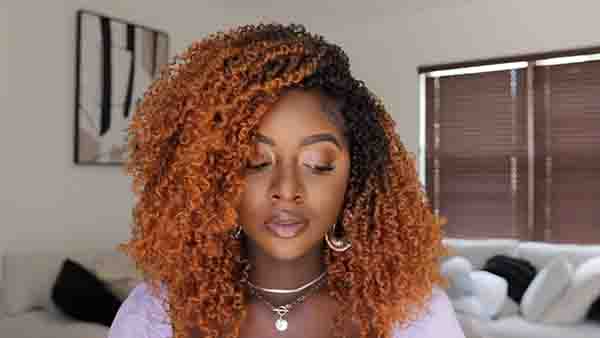
Understanding and caring for your fine natural hair shouldn’t be a chore; remember, every strand adds to your unique beauty. Try these proven protective styles to shield your hair from harsh winter elements and promote healthy growth.
- Twist Outs: These help stretch natural hair while maintaining its pattern. Keep them moisturized using natural hair oils.
- Buns: Effective and chic, just ensure not to tie them too tight to avoid tension.
- Box Braids: A low management style that invites growth. Hydrate your scalp regularly.
- Cornrows: Protecting roots and ends, it’s important to redo cornrows every two weeks to prevent matting.
- Satin-lined Caps: For bedtime or less-hair days; they reduce friction and breakage. Always wear them inside out to keep the smooth material against your hair.
Remember, versatility is key in achieving healthy hair growth.
Frizz-Free Sleep: The Power of Protective Hairstyles for Finer Hair
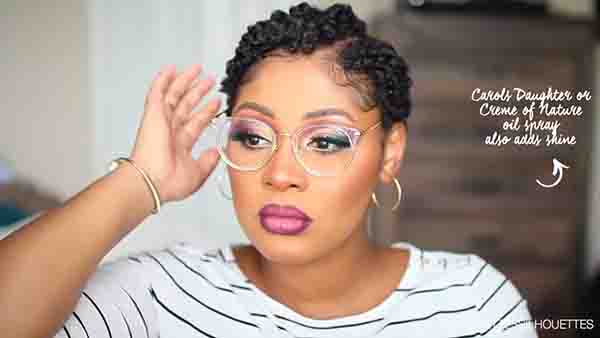
Embrace the power of protective sleep hairstyles for maintaining a frizz-free mane, regardless of your hair’s density or texture. These hairstyles, typically favored by individuals with curly hair, are equally beneficial for those with finer locks.
Protective hairstyles help curtail the friction between your hair and pillow, thus reducing frizz and breakage.
These hairstyles are extremely convenient as they offer a practical night-time routine with the additional benefit of delivering a heatless style the following day.
To achieve protective hairstyles, lightly dampen your hair, apply a leave-in conditioner, and gently twist, braid, or bun your hair.
Lightweight silk scarves or a satin bonnet can further lower friction and help seal moisture, promoting healthier hair in the long run.
Research shows; consistent adoption of these hairstyles decreases damages by up to 30%. Embrace the routine, for stronger, healthier hair.
Slick Styling Techniques: Using Pomade for Fine Hair Braiding

Harness the power of pomade for braiding fine hair to achieve polished, picture-perfect braids. Pomade is your secret weapon in taming flyaways, ensuring tight braids and a clean, defined path.
To harness the magic of pomade:
- Start by applying a dab of pomade to your fingertips.
- Thoroughly work it into the strands you’re about to braid.
- As you start the braiding process, apply more pomade whenever flyaways appear.
- Once done braiding, smooth a little pomade over the braid for that glossy finish.
Expert tip: Less is more! you can always add more pomade, but overdoing it can weigh down your fine hair. Trust in the pomade, and you’ll enjoy clean, sleek braids every time.
Winter Hair Maintenance: Protective Styles for Fine Natural Hair
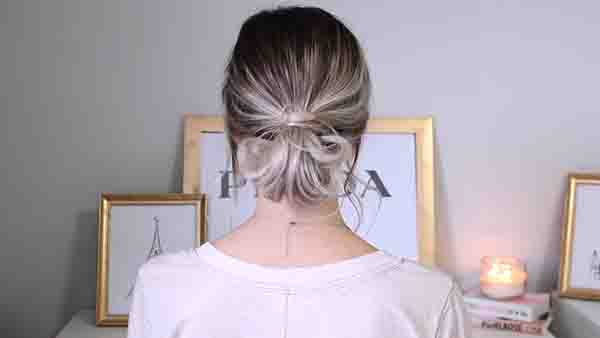
Hey there, gorgeous! As winter sneaks in, don’t let the chill wreak havoc on your fine natural locks. Embrace protective styling – it’s a real game-changer. You see, it helps to seal in much-needed moisture, combat dryness, and retain your hair’s length.
Here’s a quick rundown on some super-effective styles for your lovely tresses.
- Opt for low-manipulation styles like twists and braids. Just remember, never braid too tight!
- Fancy updos? Bun it up, but make sure it’s not too tight to prevent breakage.
- Experiment with wigs or hair extensions for a complete break from daily styling.
Maintaining these styles is easy— moisturise regularly, sleep on silk, and don’t forget to give your hair a breather in between styles. Happy styling!
Success with Cornrows: Tailoring Protective Styles to Fine Hair
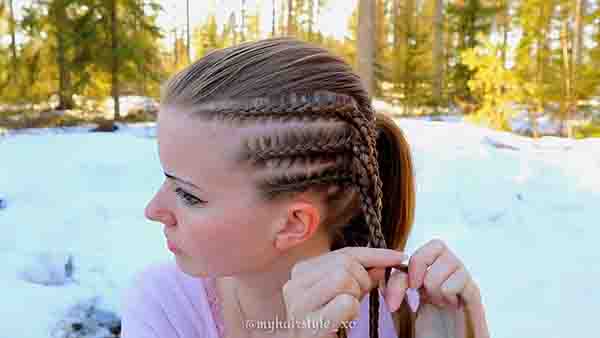
My journey began with my constant struggle with fine hair until I discovered cornrows. This protective style provided more than just relief; it embraced my hair texture and simplified maintenance.
- The first step was understanding my fine hair and acknowledging cornrows could work for me too.
- This led me, secondly, to research on how to prepare my fine hair for cornrowing. A pro-tip I found was to deep condition regularly to strengthen and thicken my hair undergoing the cornrowing process.
- Thirdly, maintaining the cornrows was a learning process. I found using a satin scarf at night helped to protect my style and minimize breakage.
To those with fine hair like me, cornrows may just be your saving grace. It’s a protective style that’s not only modern and versatile, but also a healthier choice for fine hair strands.
Perfecting the Passion Twist Hairstyle for Fine Hair

Looking for a fabulous new hairstyle on your fine hair? Look no further!
Passion Twists are a fantastic option that’s gentle on your delicate strands. Notably, their loose yet secure style prevents unnecessary breakage. Coupled with their gorgeous, natural-looking curls and vibrant colors, you’ll be turning heads in no time!
Here’s your quick guide to achieving the perfect Passion Twists.
- Begin by moisturizing your hair thoroughly to keep it healthy and strong.
- Part your hair into small sections; the tinier, the better for fine hair.
- Apply a gel to each section to ensure a tight hold without stressing your strands.
- Twist two strands of hair together, making sure to keep the twists loose yet secure.
- Finish by dipping the ends in hot water to seal the twist and further minimize the potential for breakage.
Remember, the key is balance, strike it, and Passion Twists will be your best friend!
Effortless Updos for Fine Hair: Embracing Knotless Box Braids
Knotless box braids are a godsend for anyone with fine hair. Why? They’re low tension, easy to handle, and perfect for a variety of updos. Ready to give it a try? Here’s how.
- Start by sectioning your clean, conditioned fine hair.
- Have a friend assist you in weaving your hair into knotless braids.
- Let loose or pull into a neat top knot as your mood dictates.
Maintaining is a breeze. Go easy on the styling products, and remember, a silk scarf will defend against nighttime frizz. Enjoy the freedom of knotless box braids and embrace a new level of hair convenience!
Fine Hair and Stylish Alternatives: Exploring Crochet Braids
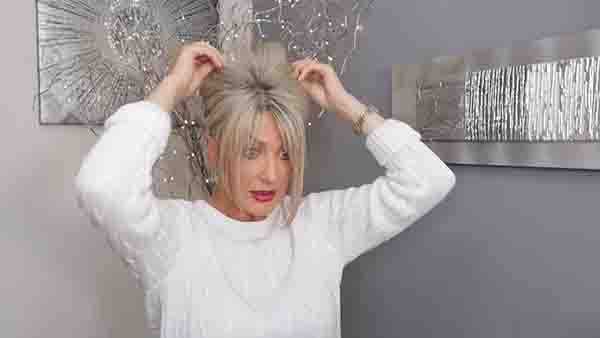
If you have fine or fragile hair, finding protective styles can be challenging. Box braids, popular for their versatility, can unfortunately be quite heavy and strain thin hair. But don’t fret, crochet braids offer an appealing alternative. These braids, primed for various hairstyles, are lightweight and kinder to your hair.
Styling your hair with crochet braids:
- Start by cornrowing your hair – keep the braids loose to prevent tension.
- Thread a crochet needle through the cornrow.
- Hook on the pre-styled crochet braid and secure it.
- Repeat the process, distributing the braids evenly.
- Expert tip: ensure the braids are not too tight – this ensures less strain on your hair while keeping the style neat.
FAQ
No, if done properly, protective styles can actually help retain hair thickness.
Avoid tight, heavy styles like tight braids or ponytails that can stress thinning hair.
Use proper installation techniques, avoid excessive tension, and moisturize regularly.
Thin box braids or small twists work well for fine hair.
Jumbo braids or twists can create the illusion of thicker hair.
Start with clean, moisturized hair and use a light styling product for hold.
Tight, heavy braids or improper installation can lead to hair thinning.
Yes, gentle and small cornrows can be suitable for fine hair.
Part small sections of hair and braid close to the scalp for gentle cornrows.
Knotless braids can last around 6-8 weeks on fine hair.
Yes, protective styles can be done on relaxed hair for added protection.
Yes, you can get braids with a relaxer, but it’s important to avoid overlapping chemicals.
Styles like low manipulation twists or loose braids can minimize breakage.
Protective styles are beneficial for all hair types, especially those prone to damage.
Yes, you can transition relaxed hair into dreadlocks if desired.
Box braids or Senegalese twists are popular protective styles for relaxed hair.
Sister locks are typically better suited for natural hair textures rather than relaxed hair.
Verdict
In conclusion, the journey through protective styling for natural hair reveals a compelling fusion of necessity and trends.
Protective styles stand as powerful allies, not only preserving hair health but elevating its manageability. With the data-backed sway of braiding, particularly for fine hair, these styles offer a dual marvel of safeguarding and style enhancement.
The contrast between hair density and thickness underlines personalized care, fostering informed choices for styling and maintenance. Recognizing the distinct attributes of fine versus thick hair is pivotal, dictating tailored approaches to nurture each type effectively.
The trials and triumphs of fine hair, from shedding to tangling, illuminate the art of harmonizing care. The impact of protective styles on fine hair unfolds as a double-edged privilege, requiring hydration vigilance alongside style allure. The pursuit of enduring protective styles aligns style and health, demanding careful treading to avert inadvertent damage.
Tailoring styles to hair texture unlocks the gateway to a harmonious blend of longevity and hair well-being. Effective protective styles unfold as essential tools for promoting natural hair growth and vitality.
The revelation of frizz-free sleep through protective hairstyles unveils a transformative nighttime routine fostering hair strength and resilience.
Unlocking the prowess of pomade for braiding fine hair underscores the subtleties in styling techniques, equipping individuals for immaculate outcomes.
Maintaining fine natural hair thrives on striking a delicate balance between attentiveness and minimalism.
As winter arrives, protective styles emerge as the ultimate defense mechanism against harsh elements, nurturing hair health while exuding style. The journey of success with protective styles narrates tales of triumph over fine hair challenges, culminating in choices that amplify well-being and aesthetics.
Passion Twists, knotless box braids, and crochet braids stand as beacons of innovation, offering pathways to style expression without compromising hair integrity.
Thus, the exploration of protective styling for natural hair transcends into a holistic narrative of care, beauty, and empowerment.

